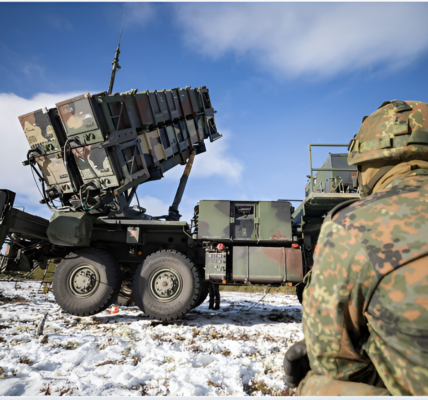
Taiwan has been accelerating its efforts to bolster its air defense capabilities in response to the growing threat from China, particularly its technological and numerical superiority in the skies. A key part of these efforts is the domestically developed Sky Sword missile family, with the Sky Sword II emerging as the flagship air-to-air missile for Taiwan’s Air Force. With a range of up to 100 km and a reported speed surpassing Mach 5, the Sky Sword II offers Taiwan a potential advantage in air combat, especially when compared to the U.S. AIM-120B missile, which has a shorter range of 75 km. The missile’s development reflects Taiwan’s urgent need to counter China’s growing air power, but will it be enough to alter the balance of power in the Taiwan Strait?
Taiwan’s Air Force currently fields a fleet of light multirole fighters, including the indigenous Ching Kuo, F-16, and Mirage 2000. These aircraft are being adapted to carry up to four Sky Sword II missiles—double the previous load—allowing for greater strike potential. Additionally, Taiwan’s Navy is set to integrate a surface-to-air variant of the Sky Sword II on its Lafayette-class frigates by 2028. However, the impact of these advancements on Taiwan’s ability to confront China’s overwhelming air superiority is questionable.
China’s advantage in both the quantity and quality of air platforms is vast. Taiwan’s fourth-generation fighters, including the Ching Kuo, are no match for China’s heavy air superiority fighters, such as the Su-35, which boasts superior range, speed, armament, maneuverability, and radar capabilities. The Su-35 can carry 14 missiles, including the R-27, which has a range of up to 130 km—giving Chinese aircraft a significant edge over Taiwan’s fighters, even when coordinated with airborne early warning and control (AWACS) systems. Reports also suggest that China could acquire MiG-31 interceptors with R-33 missiles capable of striking targets at over 300 km, a range far beyond Taiwan’s missile defenses.
Even more concerning is China’s fleet of Chengdu J-20 stealth fighters, which are expected to number in the hundreds by the time Taiwan fully integrates the Sky Sword II into its forces. The J-20, akin to the U.S. F-22 Raptor, is designed to evade long-range radars and neutralize Taiwan’s aircraft before they even have a chance to engage. Taiwan currently has no clear answer for countering stealth platforms like the J-20, as its defense strategy remains reliant on the aging radars of its current fighters.
Taiwan’s Air Force faces yet another formidable challenge in the form of China’s S-400 surface-to-air missile systems. With a range of 400 km, the S-400 can cover the entirety of Taiwan’s airspace, effectively neutralizing any Taiwanese aircraft attempting to take flight. In addition, the S-300 system already covers Taiwan’s northern half, making it almost impossible for Taiwan’s fighters to operate freely. The S-400 is widely regarded as one of the most advanced air defense systems globally, capable of targeting even the most sophisticated stealth fighters, and Taiwan’s fleet of fourth-generation aircraft has no hope of evading it.
While Taiwan’s Sky Sword II missile offers a significant upgrade in its air-to-air capabilities, the reality of its ability to hold off China’s air superiority remains grim. The island’s air force, relying on multirole fighters and a handful of missiles, is simply outmatched by China’s technological prowess and its growing fleet of advanced platforms. The threat of being grounded by China’s long-range missile systems further complicates Taiwan’s defense strategy. Without significant reinforcements, such as the acquisition of advanced air superiority fighters or state-of-the-art air defense systems, Taiwan risks losing air dominance within the opening days of a conflict.
In conclusion, while Taiwan’s missile program represents a step forward, it is unlikely to shift the power balance in the Taiwan Strait significantly. The disparity in air power between Taiwan and China is enormous, and unless Taiwan can secure substantial new military assets—especially in the form of advanced air superiority platforms or missile defense systems—the island’s vulnerability will remain a critical factor in any future conflict with the mainland.




